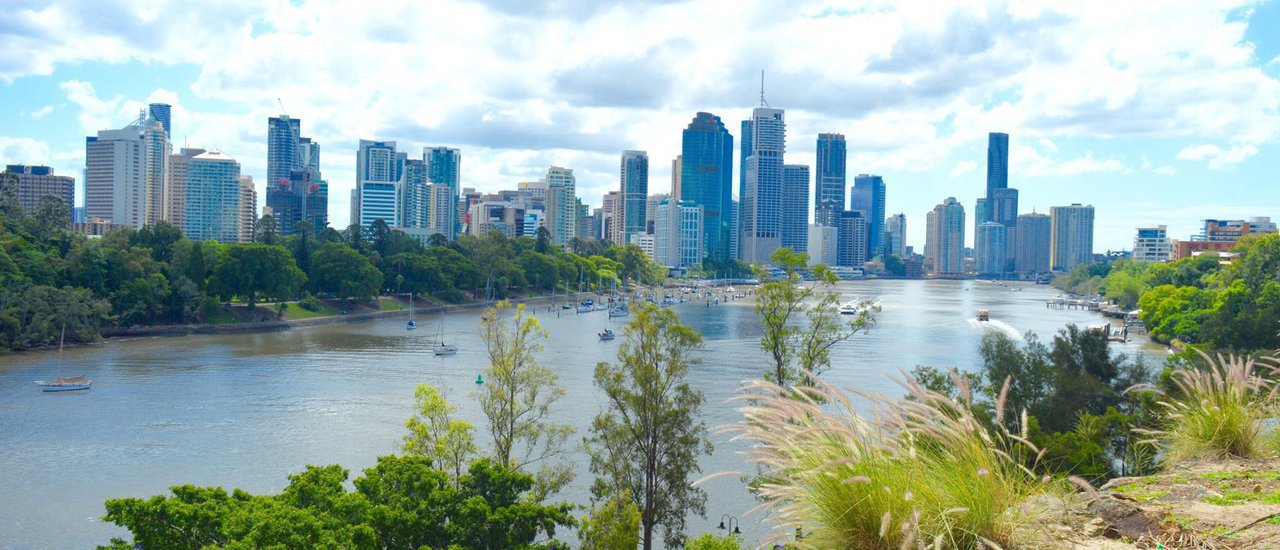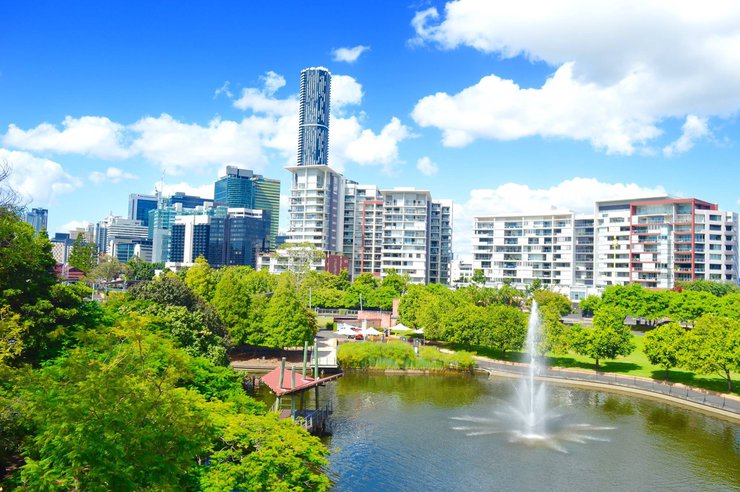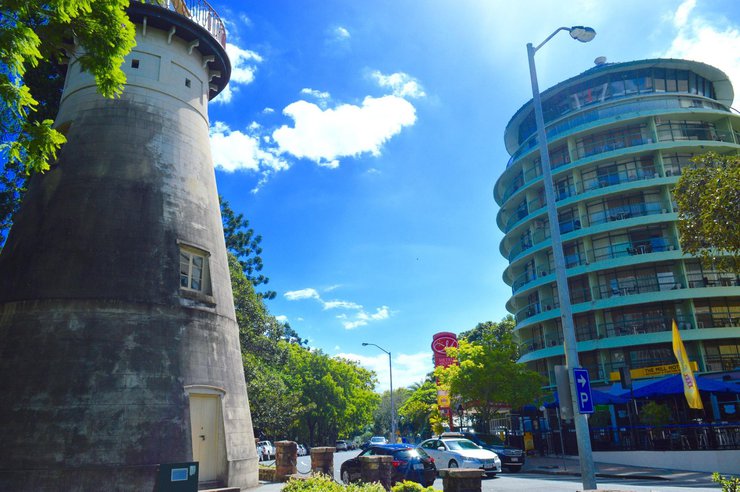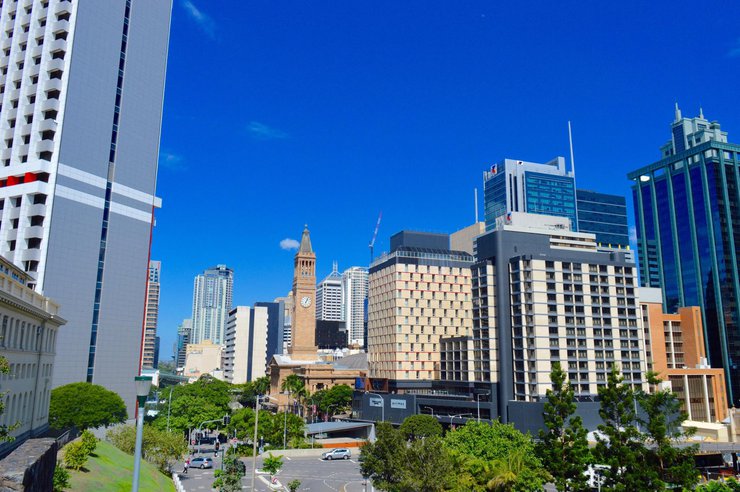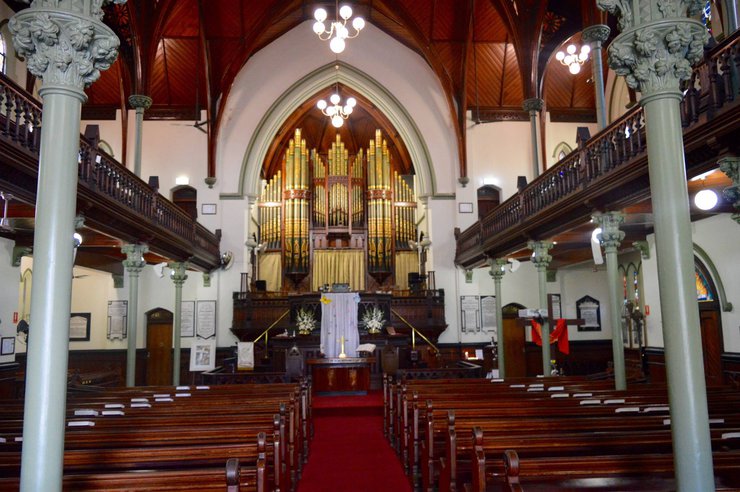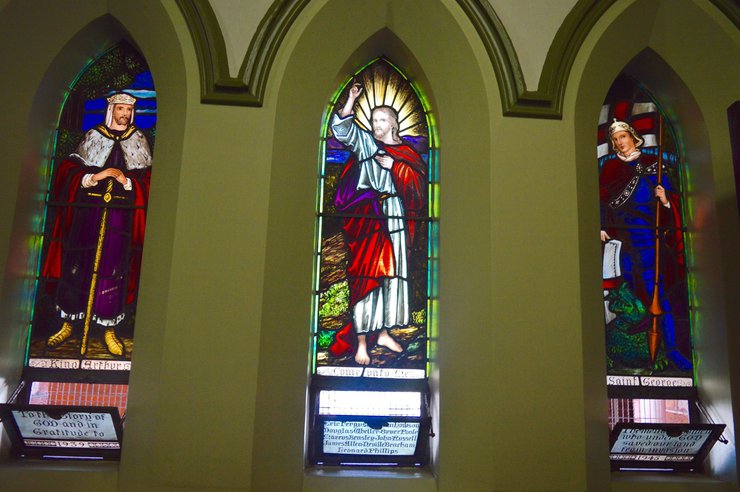Australia... not just Sydney
Brisbane, the capital of Queensland, is a significant economic hub and the third-largest city in Australia (after Melbourne and Sydney). After comparing it to other cities, I chose Brisbane for its peaceful atmosphere, abundance of green spaces, diverse tourist attractions, and a river flowing through the city center, similar to Bangkok. The Asian population is small, mainly consisting of exchange students, offering an authentic Australian experience. Brisbane is three hours ahead of Thailand, with a direct flight time of approximately eight hours. From the airport, the Airtrain Australia provides efficient transportation to the city center, departing every 15 minutes and taking about 25 minutes to reach Brisbane CBD. Our accommodation was not in the city center, similar to Siam or Asoke in Bangkok, but near Roma Street Parkland, a public park adjacent to Roma Street railway station, resembling Lumpini Park.

The towering skyscrapers in the distance mark the Brisbane CBD, the city's central business district. Our accommodation, however, is situated on the opposite side of the river, separated by the expansive Roma Street Parkland. A leisurely stroll through this verdant oasis leads directly to our destination. We opted to book our stay via Booking.com, as it conveniently allows for payment upon check-in, eliminating the need for a credit card. This flexibility proved to be highly advantageous.

After settling into our room and taking a 30-minute nap to recover from the flight, we decided to explore the city under the bright, sunny sky. The temperature was pleasant, not too hot. In the picture, you can see our accommodation on the right, which cost 2,000 Thai baht per night. On the left is Roma Street Park and The Old Windmill, built in 1828 (making it 188 years old as of 2016). This historic structure, once a windmill used to grind wheat, now serves as a local weather observation tower. A short walk past the building leads to a small public park called Wickham Park, where we stopped to escape the sun for a bit.

Wandering aimlessly, we stumbled upon the other side of the park, where the city of Brisbane lay before us. With our backs to the park and our faces towards the city, we found Roma Street Park and Roma Street railway station conveniently located behind us. Everything was within close proximity, making it impossible to get lost.

As we walk along the street towards the Brisbane CBD, we encounter the Albert Street Church. Reading the sign in front of the church, we learn that it was built in 1888, primarily using red bricks. The roof is covered with slate tiles.

The interior of the church (free admission, which I appreciate) is so beautiful that it makes me want to become a monk.

Crossing the street, I looked back to see the Albert Street Church standing tall amidst the towering buildings, a majestic sight.

Facing us is the Brisbane Clock Tower, located in King George Square. To give you a better idea, imagine it as the fountain square in Siam, Bangkok.

The atmosphere is reminiscent of a bustling city square, with restaurants, cafes, and street performers. It has a charming and vibrant feel.

Across the street is a shopping area with a wide variety of food, souvenirs, and other local goods. To give you a better idea, imagine Siam Square.


The people here dress very comfortably, in t-shirts, shorts, and sneakers. We consulted a map to find our way around, following the signs to the Australian War Memorial, a place of remembrance for Australian soldiers and civilians who lost their lives in World War II.

ANZAC Memorial Square: A Symbol of Remembrance and Resilience
The ANZAC Memorial Square has stood as a prominent landmark in Brisbane since 1930. It serves as a poignant tribute to the Australian and New Zealand soldiers who sacrificed their lives in foreign conflicts, particularly during the World Wars, and other instances of strife.
At the heart of the memorial lies an eternal flame, a perpetual reminder of the fallen soldiers and victims of war. This unwavering flame symbolizes the enduring memory of their sacrifice and the unwavering spirit of Australia's prosperity.

Across from ANZAC Square lies a small park called Post Office Square, adorned with trees and peculiar-looking birds. The area is teeming with restaurants, cafes, and inviting coffee shops, making it a popular relaxation spot for office workers. Its location amidst towering office buildings evokes a similar atmosphere to the Sathorn district in Bangkok.

We rested in the park for a while, sipping water and watching people pass by. As we walked past the park, we were stunned by the grandeur of the Cathedral of St. Stephen, which stood before us.

Free entry again, it's so good.

The interior of St. Stephen's Basilica is magnificent. The basilica was built in honor of Saint Stephen, but the exact significance of the saint remains unclear. Interestingly, similar basilicas exist in Germany, Austria, and Hungary.

After exploring the entire area, I stopped at the back of the church. I had read in Lonely Planet that the reflection of the buildings behind would fall on the church, creating a unique and beautiful angle.

Walk along the back street of the Cathedral of St Stephen, which is Eagle Street. Cross the road and follow the signs to Eagle Street Pier.

Eagle Street Pier is the main pier in Brisbane. If you want to take a boat trip and enjoy the scenery, this is the place to come. As for me, I'll just take a walk along the river and enjoy the view.

The Brisbane Riverwalk is a scenic pathway that offers stunning views of the city skyline. The path is lined with a variety of restaurants, making it an ideal spot for a romantic evening dinner.

We spent nearly 3 hours strolling through the Brisbane CBD, which was a delightful experience. There was always something to see, and the city planning was excellent, with distinct zones. Today, we'll examine a new map to see what we can explore on the other side of the Brisbane River after crossing the Story Bridge seen in the picture.
We Travel
Friday, September 27, 2024 10:42 AM

